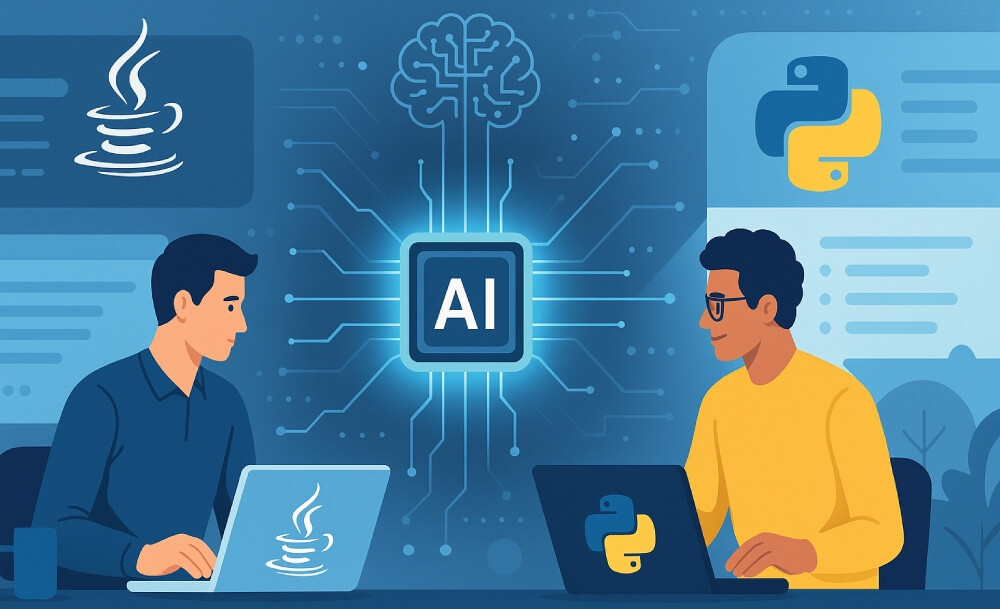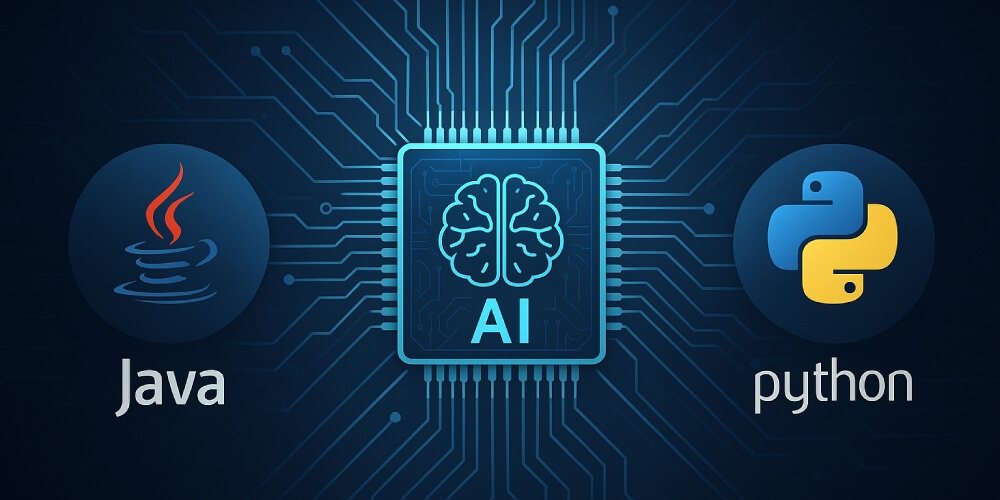Python dominates AI, but Java doesn’t need to look on with envy. In fact, Java is often the best choice when AI models need to be integrated into ready, stable production applications. If your company runs on the JVM – you don’t need to give up on AI. Quite the opposite: Java can be a powerful partner for Python-trained models, allowing seamless integration into business-proven systems.
Artificial intelligence is taking over the world – but does Java still have a place in this revolution? Ask anyone about AI, and almost everyone will point to Python. It’s the go-to language for scientists, data analysts, and prototype builders. But… what about Java? Millions of enterprise and industrial applications still run on Java, Spring Boot, and stable JVM-based technologies.
Do companies need to switch to an entirely new tech stack just to embrace AI?
Absolutely not!
Java is one of the most mature and battle-tested programming languages, valued for its reliability and robust ecosystem. Organizations worldwide rely on Java for its predictability, strong typing, and rich infrastructure that simplifies development and maintenance of large-scale systems. In reality, AI is often just one component in a broader solution – and in 9 out of 10 cases, those systems still run on the JVM.
Integrating AI models as services – fast and easy
Today’s AI models are most commonly offered as cloud-based API services. Platforms like OpenAI, Hugging Face, or Amazon Bedrock can be easily integrated into any Java application. Especially handy is the use of WebClient from Spring Boot, which allows you to send HTTP requests securely and efficiently.
Additionally, Java offers built-in tools for handling JSON, managing errors, retrying failed requests, and logging – practically out of the box. You don’t need fancy configurations to use cutting-edge AI services in Java.
Deploying AI in production – where Java truly shines
Java has long been a leader in production environments. It handles modern standards with ease – from microservices with Docker and Kubernetes, to CI/CD pipelines for testing and deployment automation, and advanced monitoring and scaling systems.
That means Java is the natural choice where reliability and easy feature integration matter – including AI models. You can deploy models as containers or services, and Java will handle them smoothly within the broader system.
Let’s not forget: the JVM supports more than just Java. Developers can also work with modern languages like Groovy, Kotlin, and Scala.
If you prefer concise, expressive syntax, Kotlin or Scala might be your pick. Groovy is great for scripting and AI testing. There are also JVM-based AI libraries like KotlinDL or Breeze – giving teams flexibility to choose tools that match their workflow.

Java + Python: not competitors, but teammates
Today’s production ecosystems don’t require an “either-or” choice. Java and Python can complement each other. Python is irreplaceable for training models, while Java excels at deploying and scaling them in large systems.
Models saved in ONNX, TensorFlow, or PyTorch formats can be shared via APIs or accessed through JNI (Java Native Interface). This hybrid setup allows teams to split responsibilities – some focus on model development, others on operationalizing them in production.
Real-life example: OpenAI + Java in 30 minutes
So how does integration look in practice? It’s really that simple. Create a Spring Boot app and connect it to ChatGPT or another AI service via API. With WebClient and a few lines of code, you can build a demo that handles customer queries, generates content, or analyzes text – all in just 30 minutes. A great way to start experimenting and build toward more advanced features.
Java and AI? It’s a practical, forward-thinking match. No need to rewrite everything in Python to take advantage of modern AI. Use the power and stability of Java, add AI models, and evolve your apps – without a tech stack revolution.
If you’re working in a Java environment and considering AI implementation – follow our blog! In upcoming posts, we’ll walk through step-by-step integrations, AI-ready microservices, and how to train models you can easily deploy in your Java projects.





